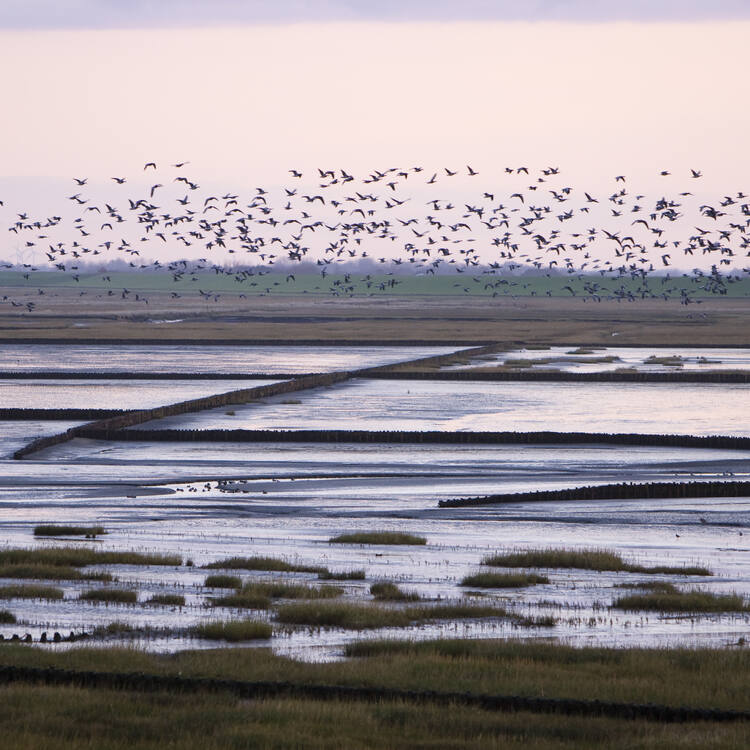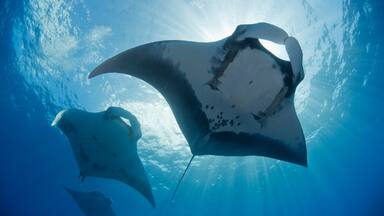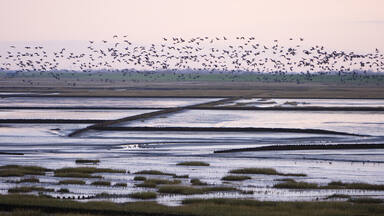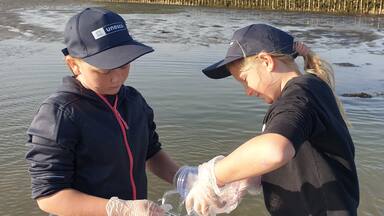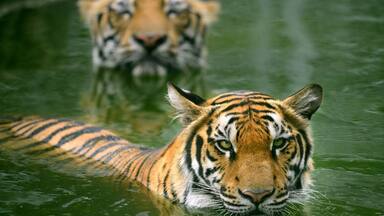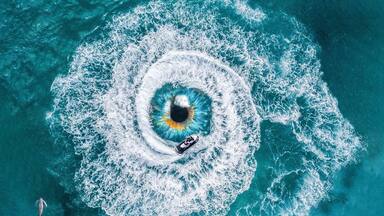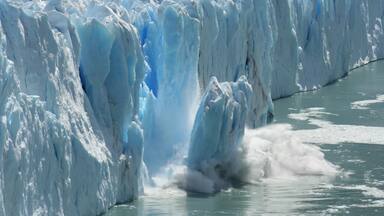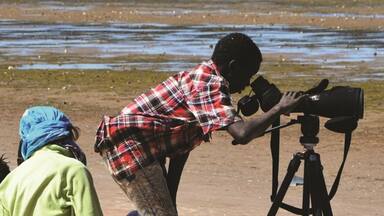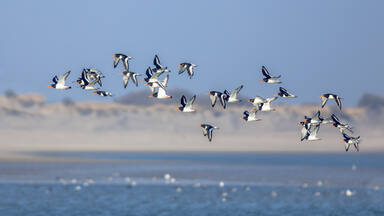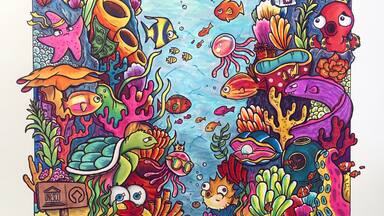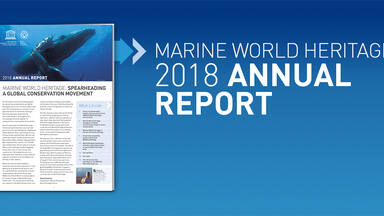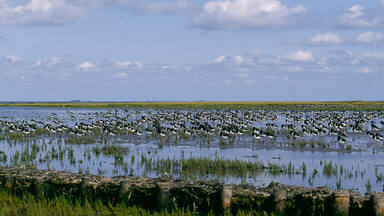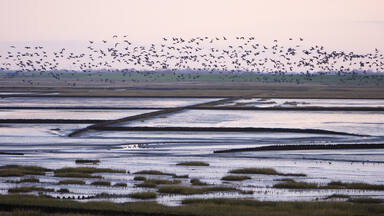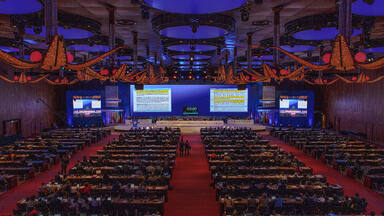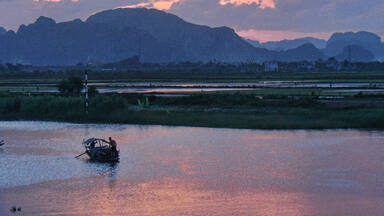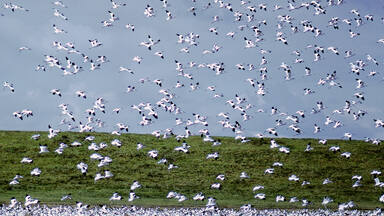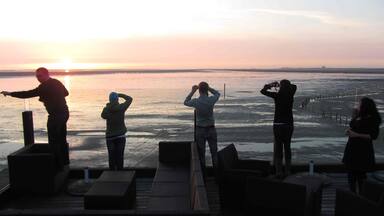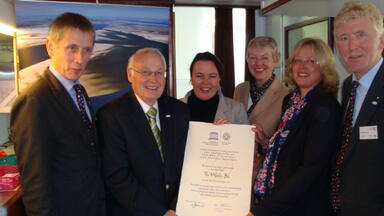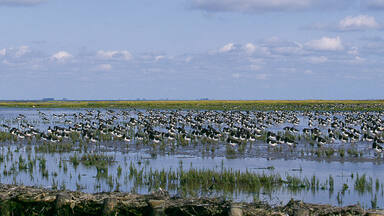Wadden Sea
Wadden Sea
The Wadden Sea is the largest unbroken system of intertidal sand and mud flats in the world. The site covers the Dutch Wadden Sea Conservation Area, the German Wadden Sea National Parks of Lower Saxony and Schleswig-Holstein, and most of the Danish Wadden Sea maritime conservation area. It is a large, temperate, relatively flat coastal wetland environment, formed by the intricate interactions between physical and biological factors that have given rise to a multitude of transitional habitats with tidal channels, sandy shoals, sea-grass meadows, mussel beds, sandbars, mudflats, salt marshes, estuaries, beaches and dunes. The area is home to numerous plant and animal species, including marine mammals such as the harbour seal, grey seal and harbour porpoise. Wadden Sea is one of the last remaining large-scale, intertidal ecosystems where natural processes continue to function largely undisturbed.
Description is available under license CC-BY-SA IGO 3.0
La mer des Wadden
La mer des Wadden est considérée comme le plus grand système mondial ininterrompu de vasières et de bancs de sable à marée. Le site comprend l’aire de conservation de la mer des Wadden néerlandaise, les parcs nationaux allemands de la mer des Wadden de Basse-Saxe et Schleswig-Holstein et la majeure partie de l’aire de conservation de la mer des Wadden danoise. Cet écosystème tempéré de zones humides côtières est le fruit d’interactions particulièrement complexes entre des facteurs physiques et biologiques. On y trouve une multitude d’habitats de transition : chenaux à marée, bancs de sable, prairies d’herbe marines, moulières, barres de sable, vasières, marais salés, estuaires, plages et dunes. L’endroit héberge de nombreuses espèces de plantes et d’animaux, dont des mammifères marins comme le phoque commun, le phoque gris et le marsouin commun. Le site est un des derniers écosystèmes intertidaux naturels à grande échelle où les processus naturels se poursuivent de manière quasi non perturbée.
Description is available under license CC-BY-SA IGO 3.0
Mar de las Wadden
source: UNESCO/CPE
Description is available under license CC-BY-SA IGO 3.0
ワッデン海
source: NFUAJ
Waddenzee
Source: unesco.nl
Outstanding Universal Value
Brief synthesis
The Wadden Sea is the largest unbroken system of intertidal sand and mud flats in the world, with natural processes undisturbed throughout most of the area. The 1,143,403 ha World Heritage property encompasses a multitude of transitional zones between land, the sea and freshwater environment, and is rich in species specially adapted to the demanding environmental conditions. It is considered one of the most important areas for migratory birds in the world, and is connected to a network of other key sites for migratory birds. Its importance is not only in the context of the East Atlantic Flyway but also in the critical role it plays in the conservation of African-Eurasian migratory waterbirds. In the Wadden Sea up to 6.1 million birds can be present at the same time, and an average of 10-12 million pass through it each year.
Criterion (viii): The Wadden Sea is a depositional coastline of unparalleled scale and diversity. It is distinctive in being almost entirely a tidal flat and barrier system with only minor river influences, and an outstanding example of the large-scale development of an intricate and complex temperate-climate sandy barrier coast under conditions of rising sea-level. Highly dynamic natural processes are uninterrupted across the vast majority of the property, creating a variety of different barrier islands, channels, flats, gullies, saltmarshes and other coastal and sedimentary features.
Criterion (ix): The Wadden Sea includes some of the last remaining natural large-scale intertidal ecosystems where natural processes continue to function largely undisturbed. Its geological and geomorphologic features are closely entwined with biophysical processes and provide an invaluable record of the ongoing dynamic adaptation of coastal environments to global change. There are a multitude of transitional zones between land, sea and freshwater that are the basis for the species richness of the property. The productivity of biomass in the Wadden Sea is one of the highest in the world, most significantly demonstrated in the numbers of fish, shellfish and birds supported by the property. The property is a key site for migratory birds and its ecosystems sustain wildlife populations well beyond its borders.
Criterion (x): Coastal wetlands are not always the richest sites in relation to faunal diversity; however this is not the case for the Wadden Sea. The salt marshes host around 2,300 species of flora and fauna, and the marine and brackish areas a further 2,700 species, and 30 species of breeding birds. The clearest indicator of the importance of the property is the support it provides to migratory birds as a staging, moulting and wintering area. Up to 6.1 million birds can be present at the same time, and an average of 10-12 million each year pass through the property. The availability of food and a low level of disturbance are essential factors that contribute to the key role of the property in supporting the survival of migratory species. The property is the essential stopover that enables the functioning of the East Atlantic and African-Eurasian migratory flyways. Biodiversity on a worldwide scale is reliant on the Wadden Sea.
Integrity
The boundaries of the extended property include all of the habitat types, features and processes that exemplify a natural and dynamic Wadden Sea, extending from the Netherlands to Germany to Denmark. This area includes all of the Wadden Sea ecosystems, and is of sufficient size to maintain critical ecological processes and to protect key features and values.
The property is subject to a comprehensive protection, management and monitoring regime which is supported by adequate human and financial resources. Human use and influences are well regulated with clear and agreed targets. Activities that are incompatible with its conservation have either been banned, or are heavily regulated and monitored to ensure they do not impact adversely on the property. As the property is surrounded by a significant population and contains human uses, the continued priority for the protection and conservation of the Wadden Sea is an important feature of the planning and regulation of use, including within land/water-use plans, the provision and regulation of coastal defences, maritime traffic and drainage. Key threats requiring ongoing attention include fisheries activities, developing and maintaining harbours, industrial facilities surrounding the property including oil and gas rigs and wind farms, maritime traffic, residential and tourism development and impacts from climate change.
Protection and management requirements
Maintaining the hydrological and ecological processes of the contiguous tidal flat system of the Wadden Sea is an overarching requirement for the protection and integrity of this property. Therefore conservation of marine, coastal and freshwater ecosystems through the effective management of protected areas, including marine no-take zones, is essential. The effective management of the property also needs to ensure an ecosystem approach that integrates the management of the existing protected areas with other key activities occurring in the property, including fisheries, shipping and tourism.
The Trilateral Wadden Sea Cooperation provides the overall framework and structure for integrated conservation and management of the property as a whole and coordination between all three States Parties. Comprehensive protection measures are in place within each State. Specific expectations for the long-term conservation and management of this property include maintaining and enhancing the level of financial and human resources required for the effective management of the property. Research, monitoring and assessment of the protected areas that make up the property also require adequate resources to be provided. Maintenance of consultation and participatory approaches in planning and management of the property is needed to reinforce the support and commitment from local communities and NGOs to the conservation and management of the property. The State Parties should also maintain their commitment of not allowing oil and gas exploration and exploitation within the boundaries of the property. Any development projects, such as planned wind farms in the North Sea, should be subject of rigorous Environmental Impacts Assessments to avoid any impacts to the values and integrity of the property.
